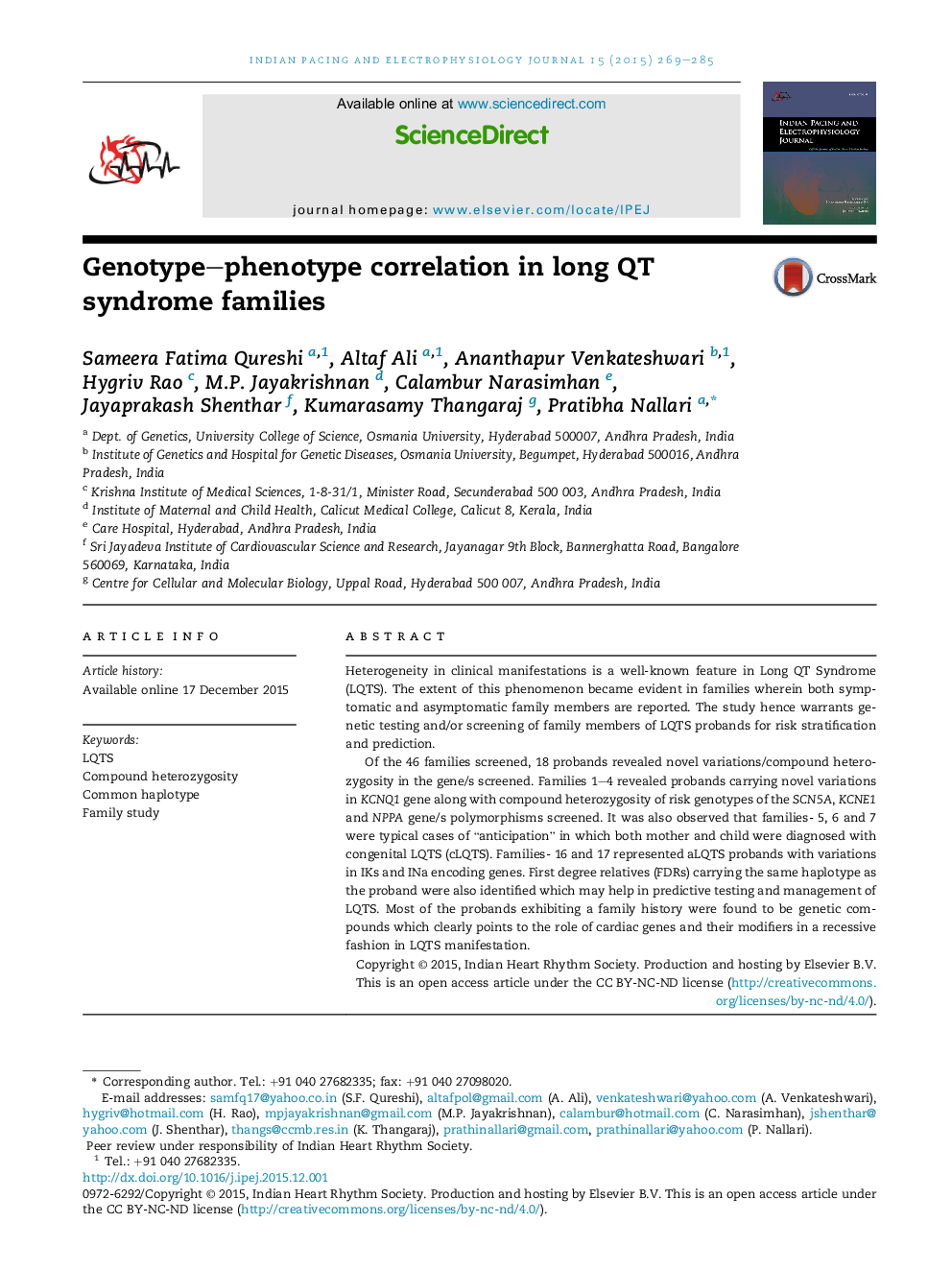| Article ID | Journal | Published Year | Pages | File Type |
|---|---|---|---|---|
| 2928349 | Indian Pacing and Electrophysiology Journal | 2015 | 17 Pages |
Heterogeneity in clinical manifestations is a well-known feature in Long QT Syndrome (LQTS). The extent of this phenomenon became evident in families wherein both symptomatic and asymptomatic family members are reported. The study hence warrants genetic testing and/or screening of family members of LQTS probands for risk stratification and prediction.Of the 46 families screened, 18 probands revealed novel variations/compound heterozygosity in the gene/s screened. Families 1–4 revealed probands carrying novel variations in KCNQ1 gene along with compound heterozygosity of risk genotypes of the SCN5A, KCNE1 and NPPA gene/s polymorphisms screened. It was also observed that families- 5, 6 and 7 were typical cases of “anticipation” in which both mother and child were diagnosed with congenital LQTS (cLQTS). Families- 16 and 17 represented aLQTS probands with variations in IKs and INa encoding genes. First degree relatives (FDRs) carrying the same haplotype as the proband were also identified which may help in predictive testing and management of LQTS. Most of the probands exhibiting a family history were found to be genetic compounds which clearly points to the role of cardiac genes and their modifiers in a recessive fashion in LQTS manifestation.
